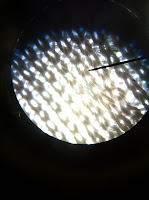1. History of Hair and Fiber Analysis
- 1857
In France, one of the first papers on hair analysis was published.
- Early 1900’s
Microscopic examination of hair was established and well used.
- 1931
Professor John Glaister published his work “Hairs of Mammalia from the Medico-legal Aspect,” which became a famous source for hair analysis information.
- 1977
John Hick’s “Microscopy of Hairs: A Practical Guide and Manual” set up the groundwork for the use of hair evidence by forensic examiners.
- 2011
Due to the technology of this age, hair and fiber analysis is now a key part to a forensic investigation. With the use of microspores and technology which reveals DNA hair and fibers are very helpful in an investigation and are now used to their full potential.
http://jwilliamsforensics.blogspot.com/2009/09/history-of-hair-and-fibre-analysis.html
http://www.ehow.com/about_6102496_forensic-science_-hair-fiber-analysis.html
http://www.ehow.com/about_6102496_forensic-science_-hair-fiber-analysis.html
3. Major Types of Fibers
Cotton:
Polyester:
4. Hair and Fiber Collection Techniques
There are many techniques used by professional organizations for hair and fiber recovery. According to the FBI taping, shaking, scraping and picking work well to gather samples from bedding and clothes. Unique vacuums furnished with filtered containment units work favorably to collect hair from carpets and upholstered surfaces. However, recovering hair can prove to be difficult when used for evidence due to the risk of cross transfer and contamination; nevertheless special lighting and magnification tools can decrease the chance of contaminating the evidence.
5. Typical Hair and Fiber Analysis
Scientists usually use microscopes and fibers from related locations when analyzing hairs and fibers from crime scenes to identify criminals or victims. Microscopes are often used to determine whether a hair is from a human, the race from which the hair came from or whether it is an actual hair or a fiber. DNA tests are also used to analyze hair in an investigation. It can reveal the identity of a person at the scene of the crime.
Most of fiber analysis is done through microscopic examinations. There are not as many parts in a fiber as there are in a hair, but that does not make it less valuable. When analyzing under a microscope, one must try to find the color, texture, shape, pattern, twist, cross sectional appearance and surface characteristics of a fiber. Once this is accomplished, type and origin of the fiber may become obvious. Fibers may also be evaluated through physical match (used when larger pieces are available and can be physically matched by site, shape, and size) and micro-chemical tests. These various chemical reagents are used for determining physical characteristics of the fiber: melting point, density, ash formation, tensile strength and solubility; however these tests destroy the fiber.
6. Reliability of Hair and Fiber Analysis in Crime Scene Data
7. Famous Case Where Hair Was Used to Exonerate an Innocent Man
James Driskell was sentenced to life in prison in 1991 when he was convicted of the murder of Perry Harder, who was killed September of 1990 in Winnipeg. His body was found, shot several times in the chest, in a shallow grave by some railroad tracks. Police suspected Driskell killed Harder because he was involved in a series of break-and-enters with Driskell, but Driskell denied any part in these crimes. The Association in Defense of the Wrongly Convicted said a Winnipeg RCMP lab incorrectly analyzed three hairs used to convict Driskell. An RCMP analyst testified at the trial the hairs, found in Driskell's van, belonged to the victim; the prosecution continued to argue that Driskell murdered Harder in the van. According to test results from the Forensic Science Services in England, none of the hairs belonged to Harder. James Driskell sat in prison for 12 years before accurate DNA tests were taken on the hair evidence that proved his innocence.















Charlotte, I love how you turn information that might be a little boring into a very concise, but detailed post. Keep up the good work!
ReplyDeleteYou were very detailed with everything in this post and I love that you used so many pictures!
ReplyDeleteGreat job Charlotte! Nice details and pics correlate well with text. Keep up the good work!
ReplyDeleteThank you! I worked really hard on the posts on this page and I'm glad you all see it.
ReplyDelete